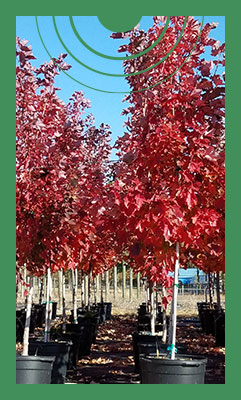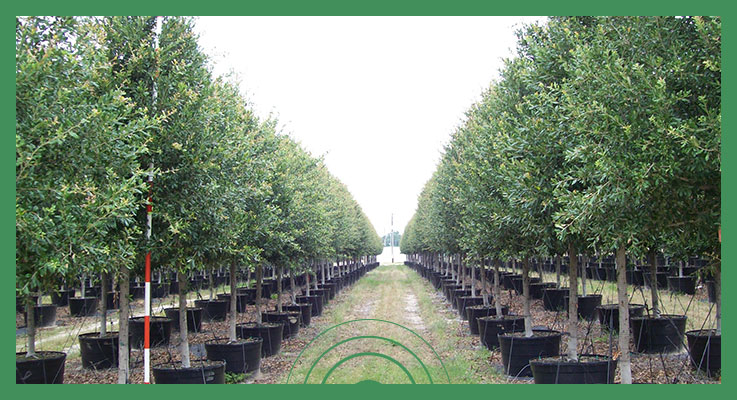When considering which trees to produce, several factors are important, but profitability is king
What’s the recipe for becoming a successful grower of trees?
Try one part climate and weather, another part land and inputs. Add in a solid team of employees and loyal customers, some business acumen and a dash of forecasting magic. Don’t forget the ability to foresee consumer trends a few years into the future and the skill and planning to survive Mother Nature’s curveballs, global economic trends and other unknown factors.
Mix it all up just right and, with a little luck, it might just work.
Obviously there’s more to the magic of growing trees than that, but it’s a start. To find out even more about it, Digger tapped into three Oregon Association of Nursery-member growers with footprints in Oregon.
Everde Growers
 For Everde Growers, a nursery with 14 farm locations across four states, all kinds of factors go into deciding what trees to grow.
For Everde Growers, a nursery with 14 farm locations across four states, all kinds of factors go into deciding what trees to grow.
David Kirby, executive vice president at Everde, said the company is guided by a demand plan, which it creates by comparing market intelligent from its sales team along with production input from the operations team. The process is made more complicated because Everde has to take into consideration both the retail and landscape side of the nursery business.
“The demand from each channel can vary greatly,” Kirby said. “Our goal is to grow and deliver the trees that will fill our customers’ demand while taking consideration for ‘New Genetics’ and cultivars that our customers may not currently be aware of.”
Additionally, Everde relies on trialing areas at its farms in Oregon, California, Texas and Florida, where it grows a mix similar varieties and new cultivars to determine what trees grow best and are likely to be popular sellers. Kirby said Everde works with tree breeders from around the world to figure out which trees to place into trials.
“The best selections and cultivars we can find have landscape appeal, contain some positive differentiating characteristic and offer us some competitive advantage,” he said.
Every plant that goes into Everde’s production plan gets priced on a mix of market value and margin requirements. Additionally, the nursery takes into account all costs associated with a plant, from mix ingredients and plant input costs to residency, labor and container costs.
Because Everde has such a wide range of customers — landscape contractors, garden retailers, wholesalers and landscape architects — it has a vast mix of plants and trees in its inventory. To help manage that inventory, Everde uses SKU rationalization.
This means they use a process to measure the profitability of the projects they are selling. Selling price and production costs are obviously the two main components, and with trees, many things are included in production costs, including land, labor and inputs.
“We continually rationalize our plant categories to eliminate redundant varieties,” Kirby said. “We strive to deliver the best of the best within each category and make sure that our customers are aware of our direction so we can transition their demand to these best varieties. We gather feedback from our operations teams to ensure we are concentrating on the plants that not only are higher in demand but also grow best at our farms.”
Everde also puts technology to use for its tree operations, using GPS-guided planting machines, which can also be used for crop maintenance to ensure consistency, and an image grading process that’s used during assembly. Through the process, all plants that move through a pruning machine or that are brought to the shipping docks go through the image grading process to ensure they meet required size and specification.
Looking ahead, Kirby said Everde will continue using ever-safer machines for maintenance and vertical integration, as employee safety is a key driver in the nursery’s decision-making. The company is also building out its in-ground production areas to accommodate its expanding inventory, and more and more, it’s looking for ways to overcome challenges connected to acquiring starter material from third-party suppliers, which can be impacted by quality issues and supply chain shortages.
“In order to maintain consistent inventory,” Kirby said, “it is imperative that we find alternatives. Producing as much as we can in house is a good solution.”
SOURCE: http://www.diggermagazine.com/when-you-know-what-to-grow/




